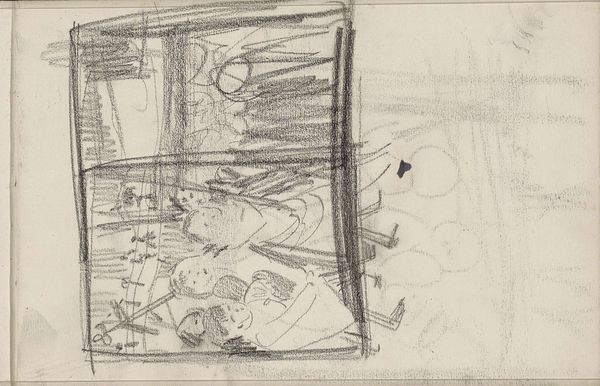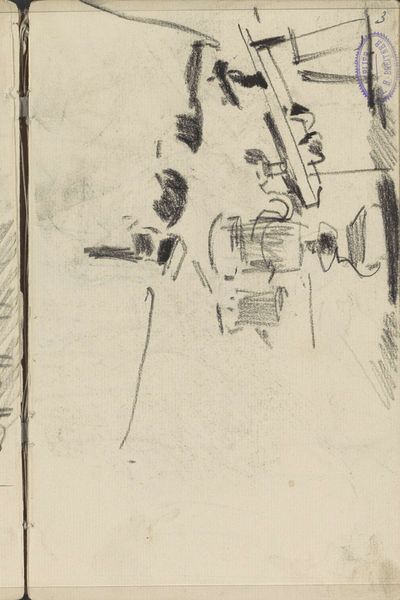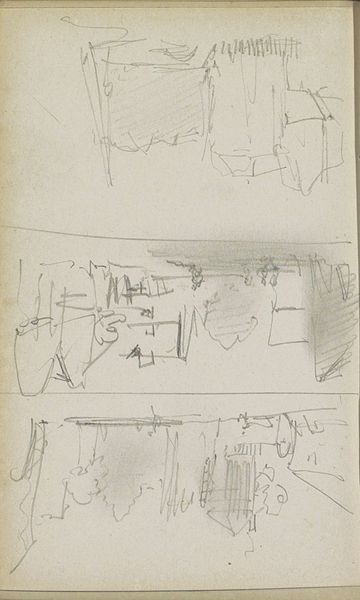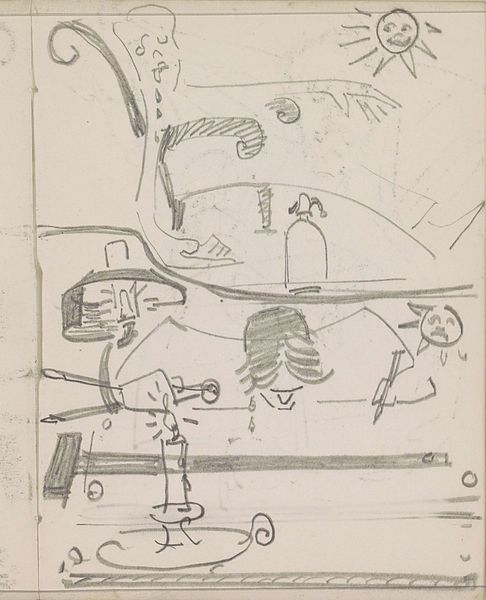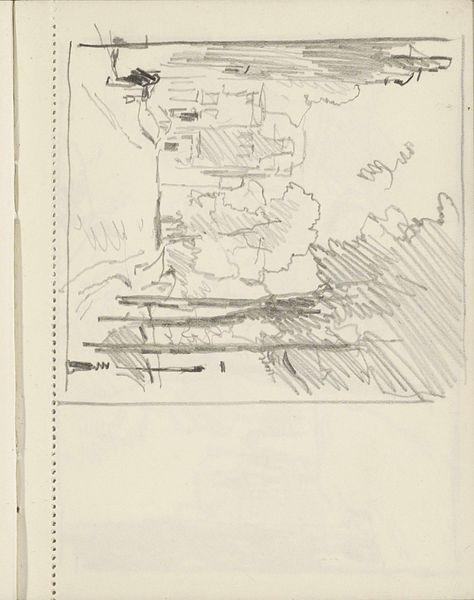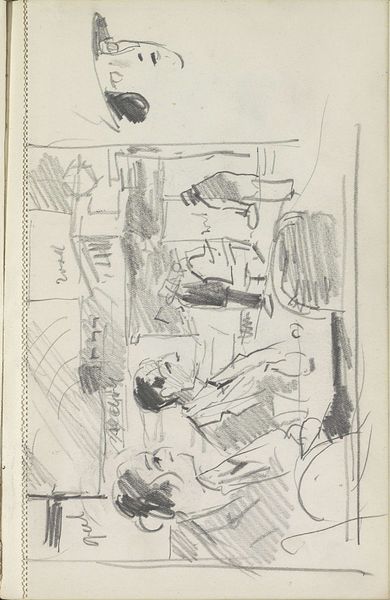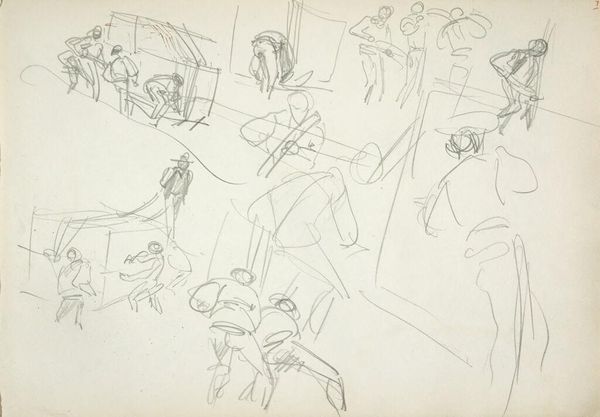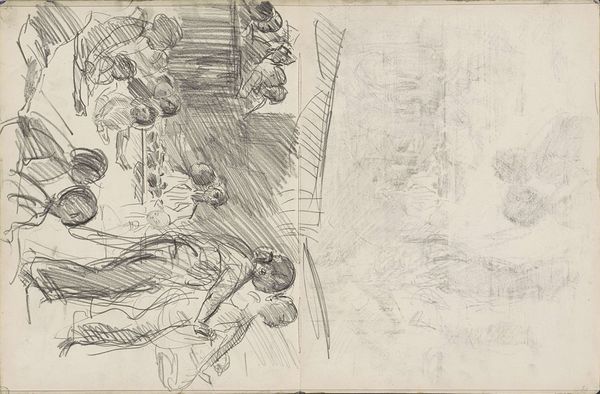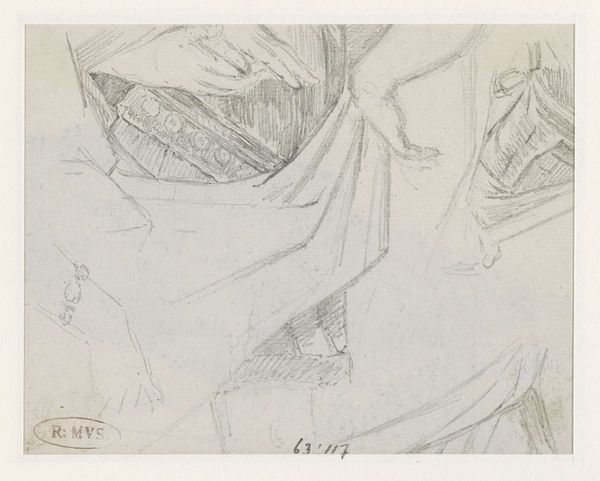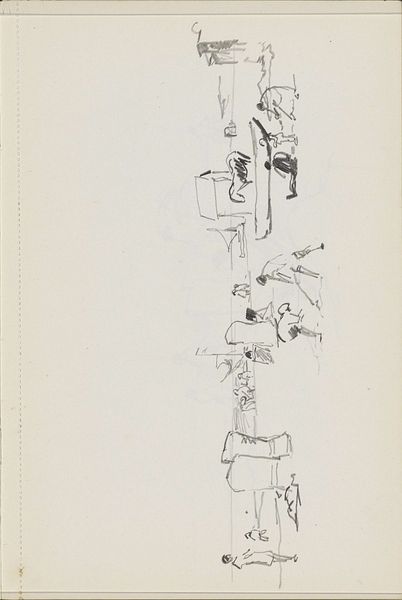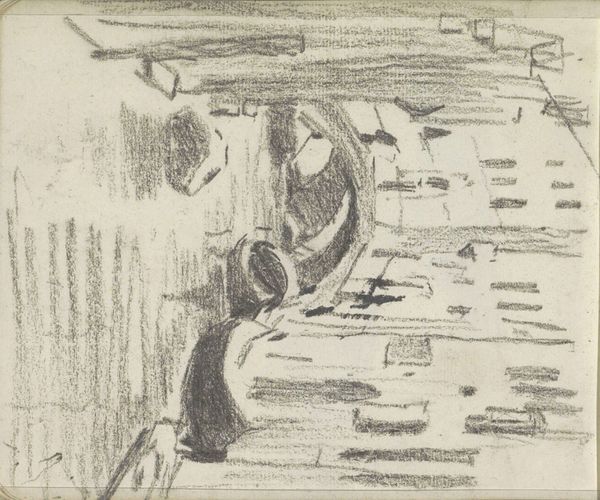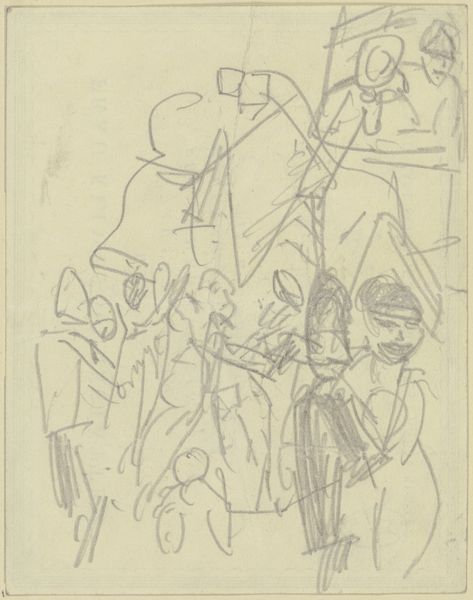
print, photography, gelatin-silver-print
# print
#
street-photography
#
photography
#
gelatin-silver-print
#
modernism
Dimensions: sheet: 25.3 x 20.3 cm (9 15/16 x 8 in.)
Copyright: National Gallery of Art: CC0 1.0
Curator: We are looking at Robert Frank’s “Hershey Story 11” from 1956, a gelatin silver print that reveals a series of moments captured on film. It's fascinating how Frank distills narrative through his chosen medium. Editor: My initial reaction is of industrial observation – assembly lines, masses of children – a stark commentary of conformity with the use of silver gelatin in capturing these moments. Curator: Exactly. The narrative unfolds around a school tour of what seems like a chocolate factory. Considering Frank's larger body of work, "The Americans", this piece continues to dissect post-war American culture through the lens of consumerism and, in this case, childhood experiences shaped by industrial production. Editor: It is quite dark. Note the tight compositions and deep blacks contrasting against areas of extreme light and then how these masses, especially the children, are shot. What exactly is Frank trying to convey regarding their future participation in the labor movement? Curator: It goes further than just a reflection of factory production; it touches upon themes of innocence and cultural assimilation. We see this through a racial lens, given the predominantly white faces in these images juxtaposed against a history of marginalized communities often absent in mainstream narratives. Editor: A fair point. I mean, Frank is clearly concerned with production and its visible effects, as shown through his documentation, which highlights this assembly-line structure that can easily reflect human engagement and cultural uniformity. The dark blacks he chooses also denote social inequality, especially between these children's parents, depending on who had access to economic and industrial success in a 1950s system based heavily on capitalism and segregation. Curator: And thinking about Modernism as a movement, you have here allusions to the modern machinery. Frank utilizes documentary photography, to give insight on how social classes are established and upheld throughout a capitalist nation. The image can also touch upon more controversial topics of exploitation within the manufacturing industry at the time, a system not yet widely regulated. Editor: Considering what we know about Modernism, the series seems critical towards themes like cultural commodification, as illustrated throughout the images, and its long lasting presence amongst communities both wealthy and low-income. Curator: Absolutely. Reflecting on “Hershey Story 11”, we have both seen the potential impact a place, seemingly as jovial as a chocolate factory, can play on cultural standards and inequalities present through our society's economic system. Editor: This reminds us to consider materials and processes when deciphering artworks, acknowledging that materiality is equally significant.
Comments
No comments
Be the first to comment and join the conversation on the ultimate creative platform.

